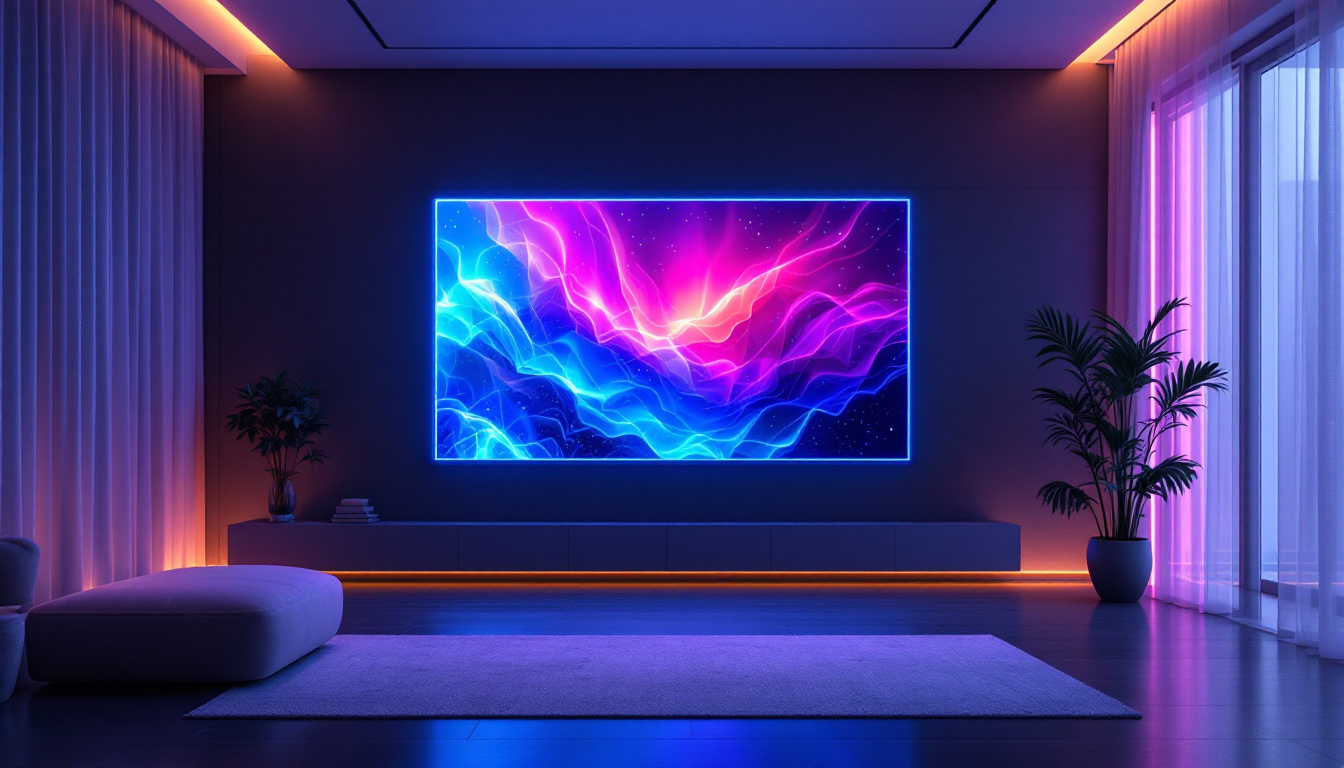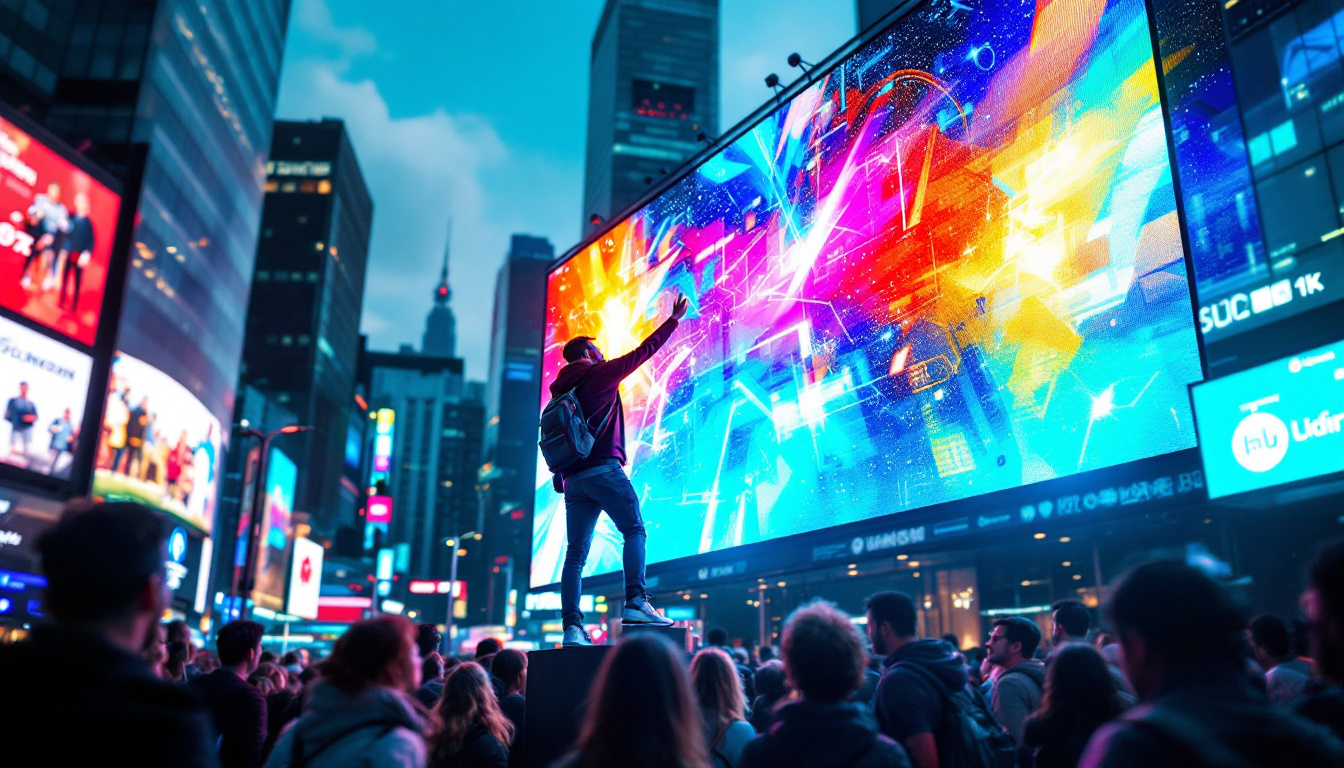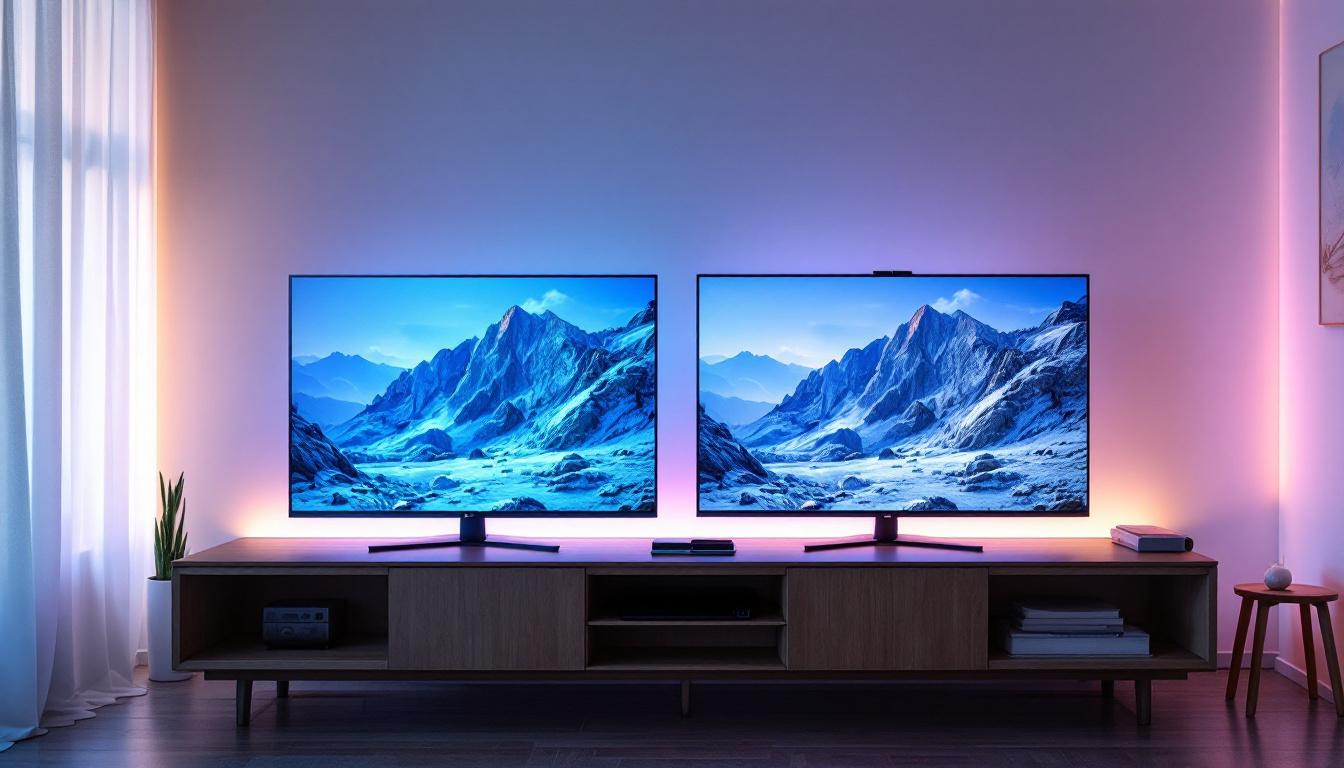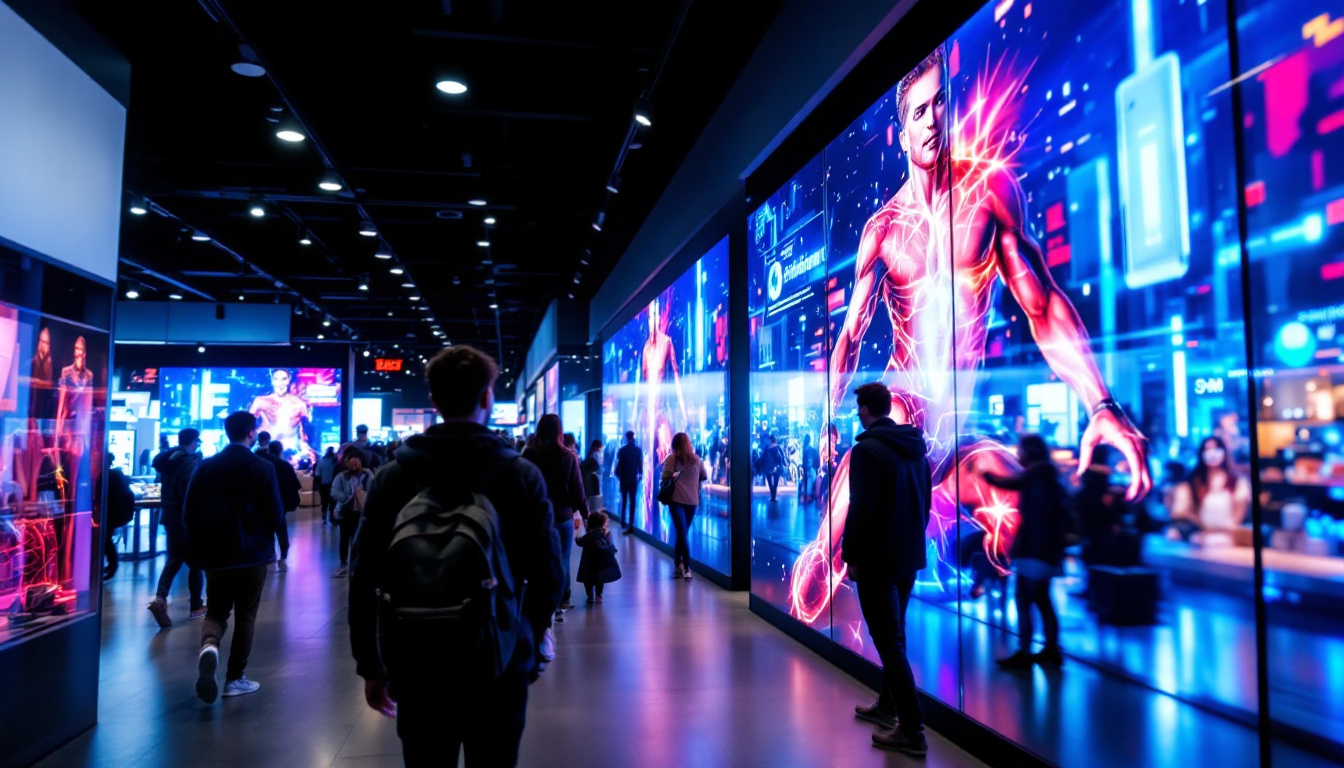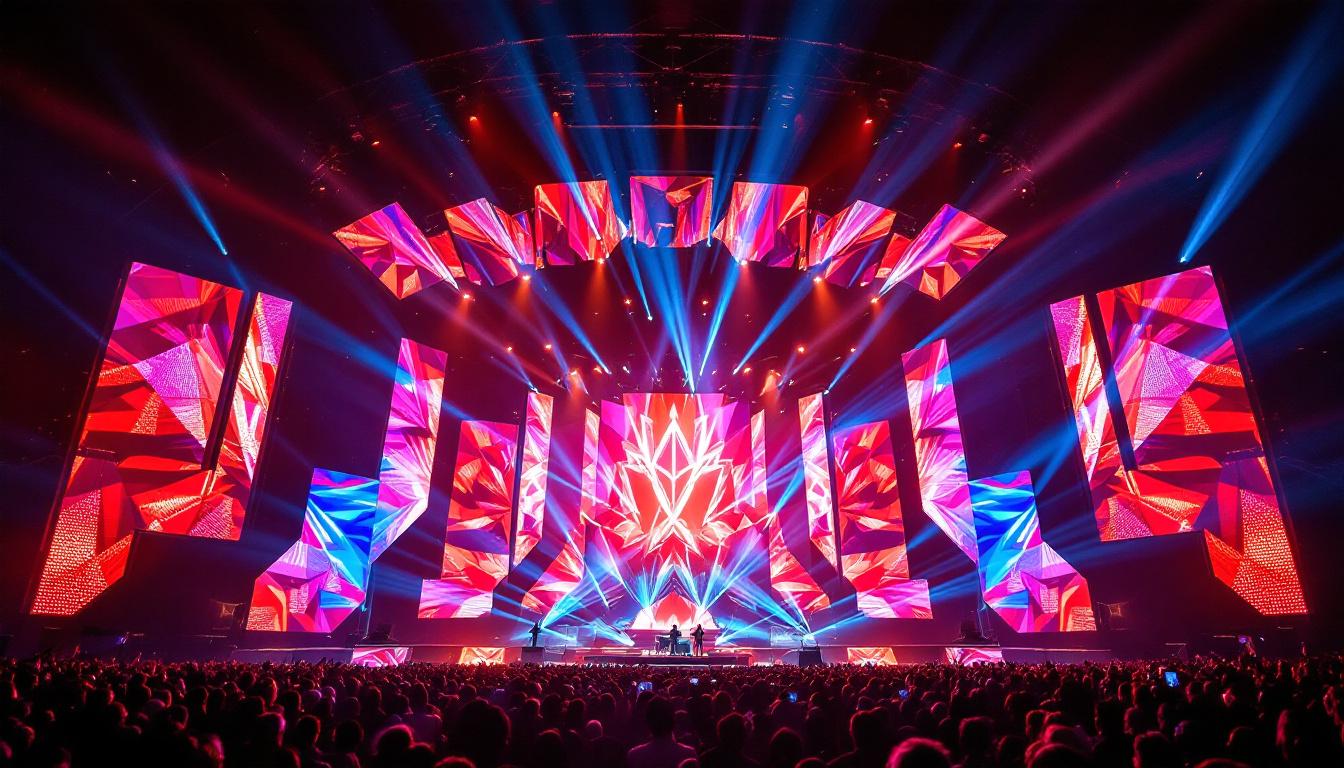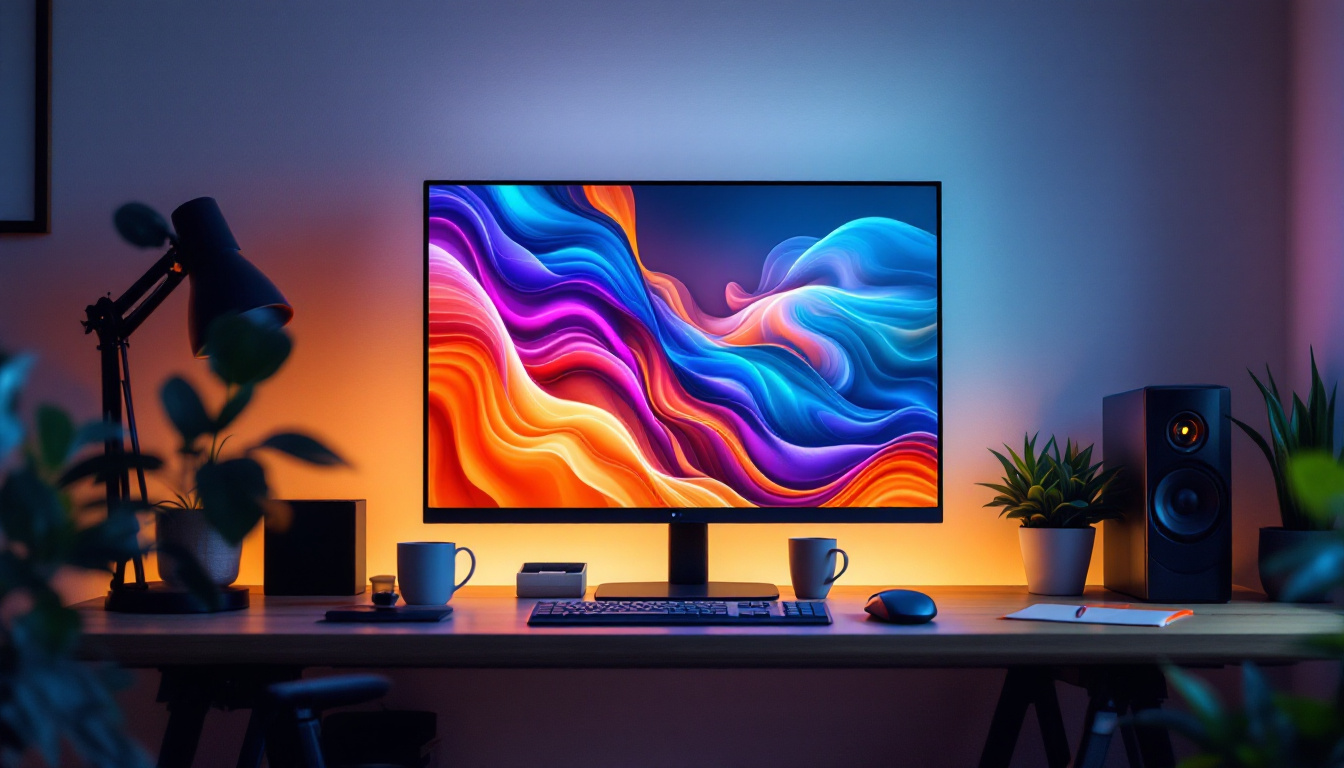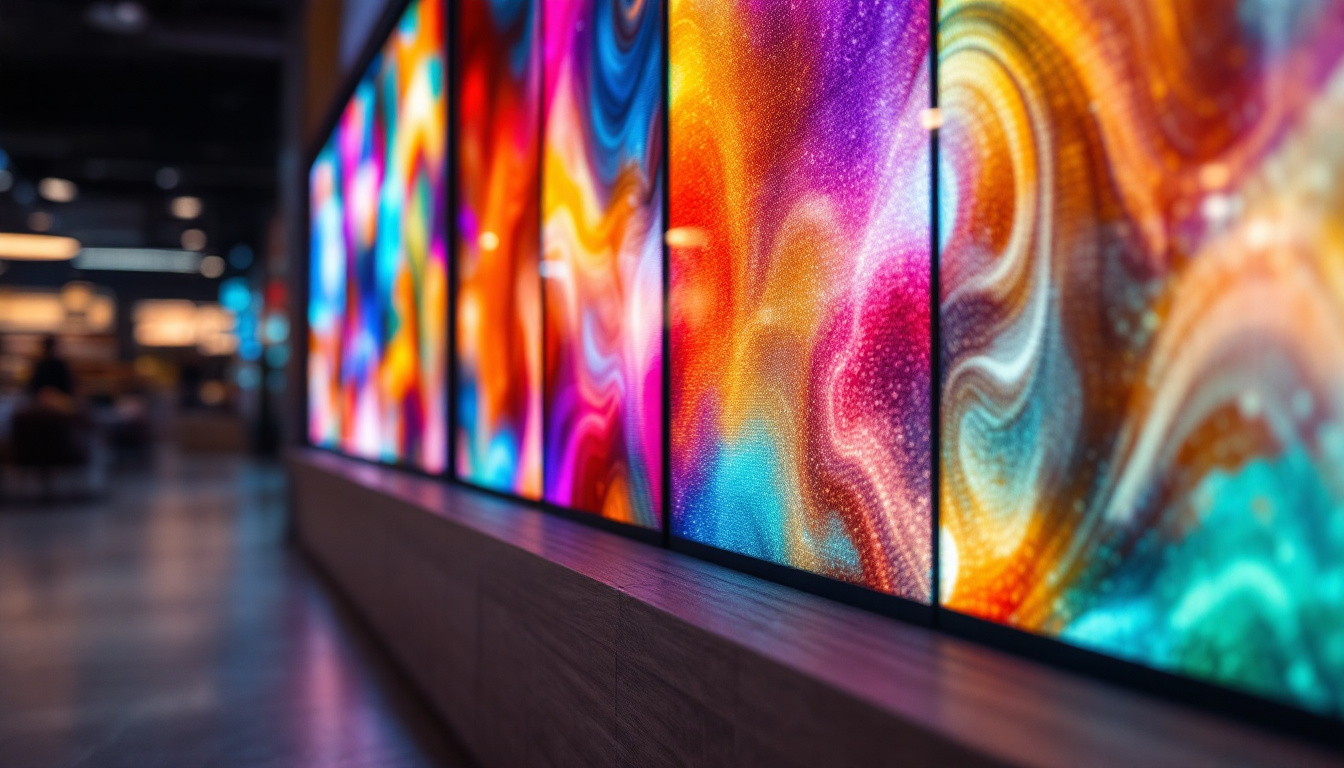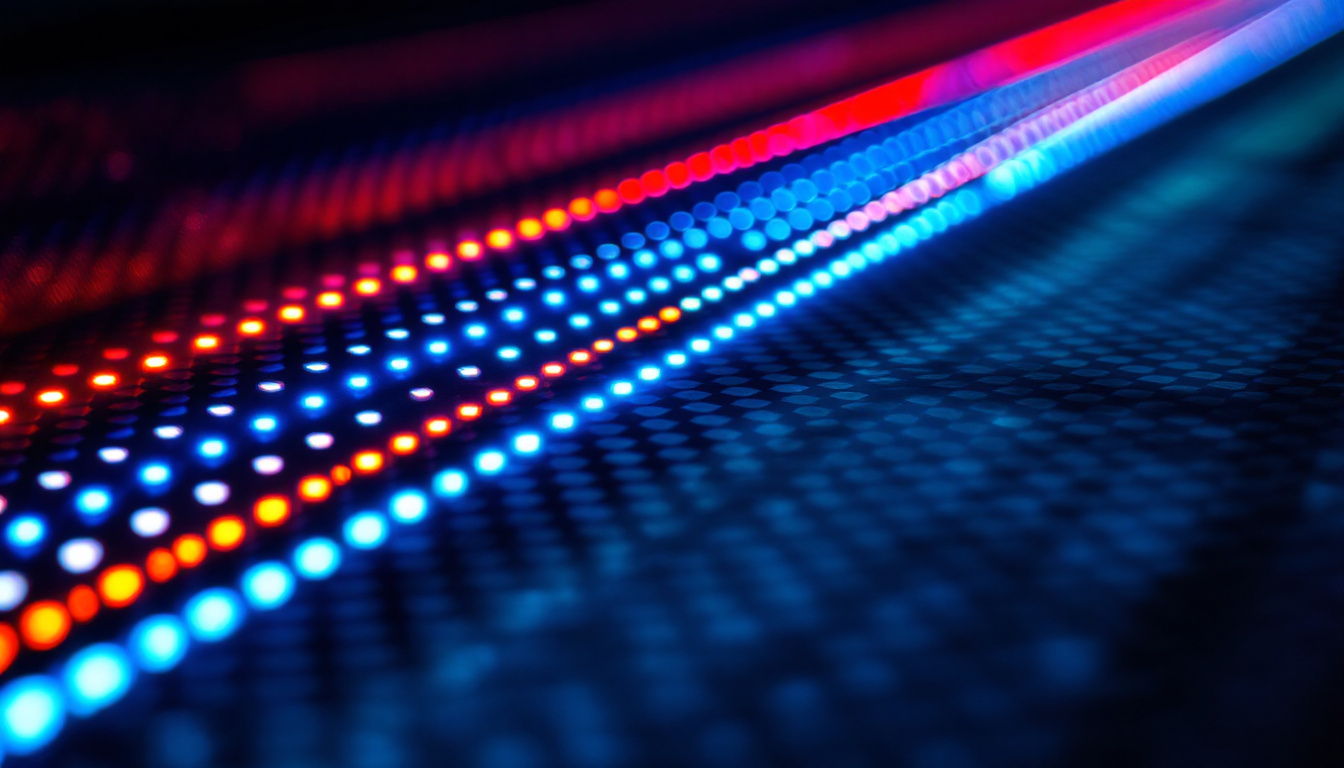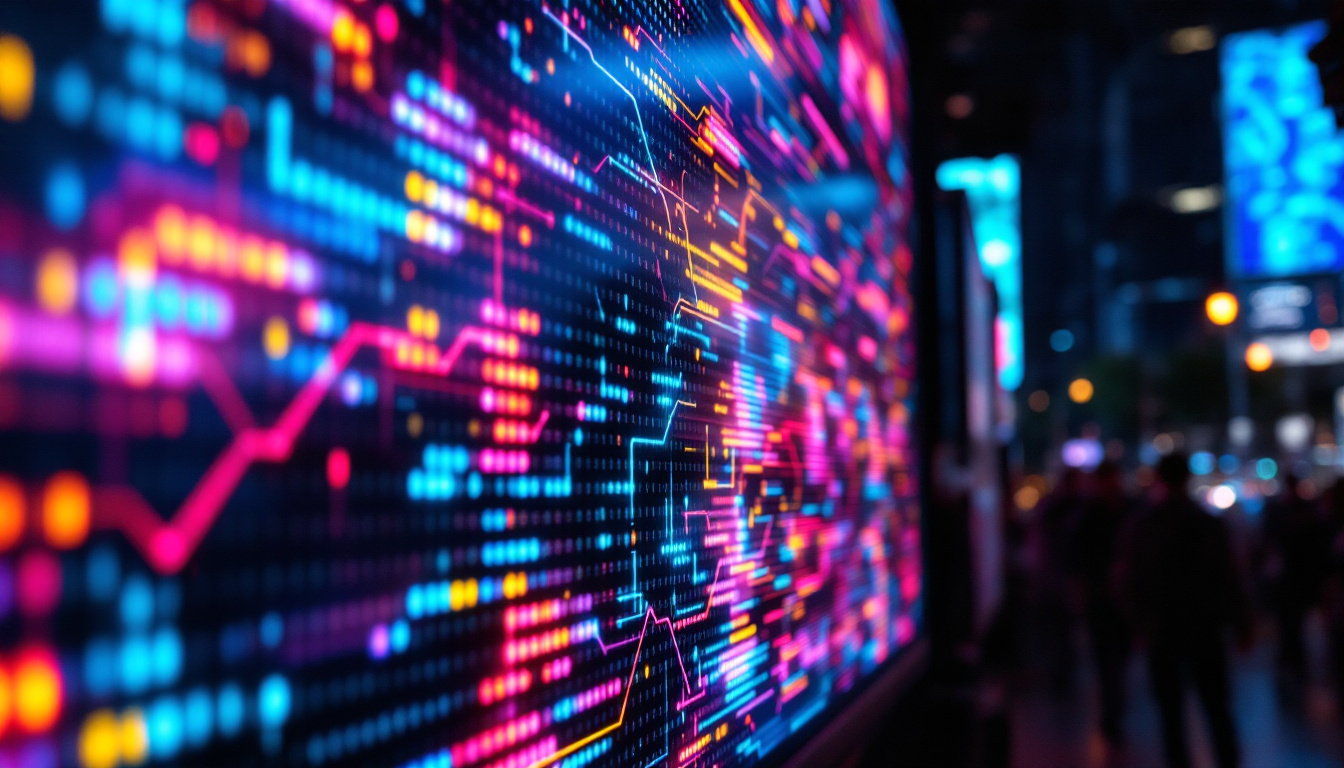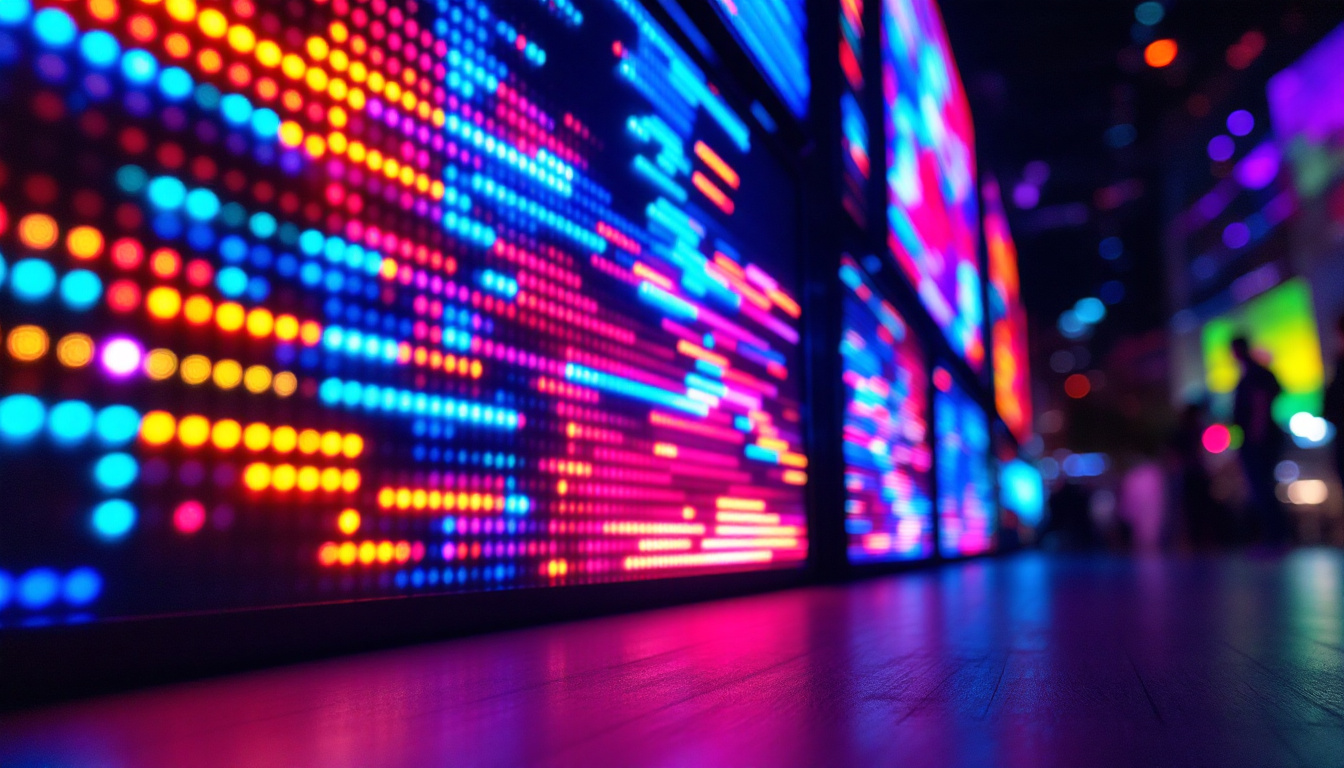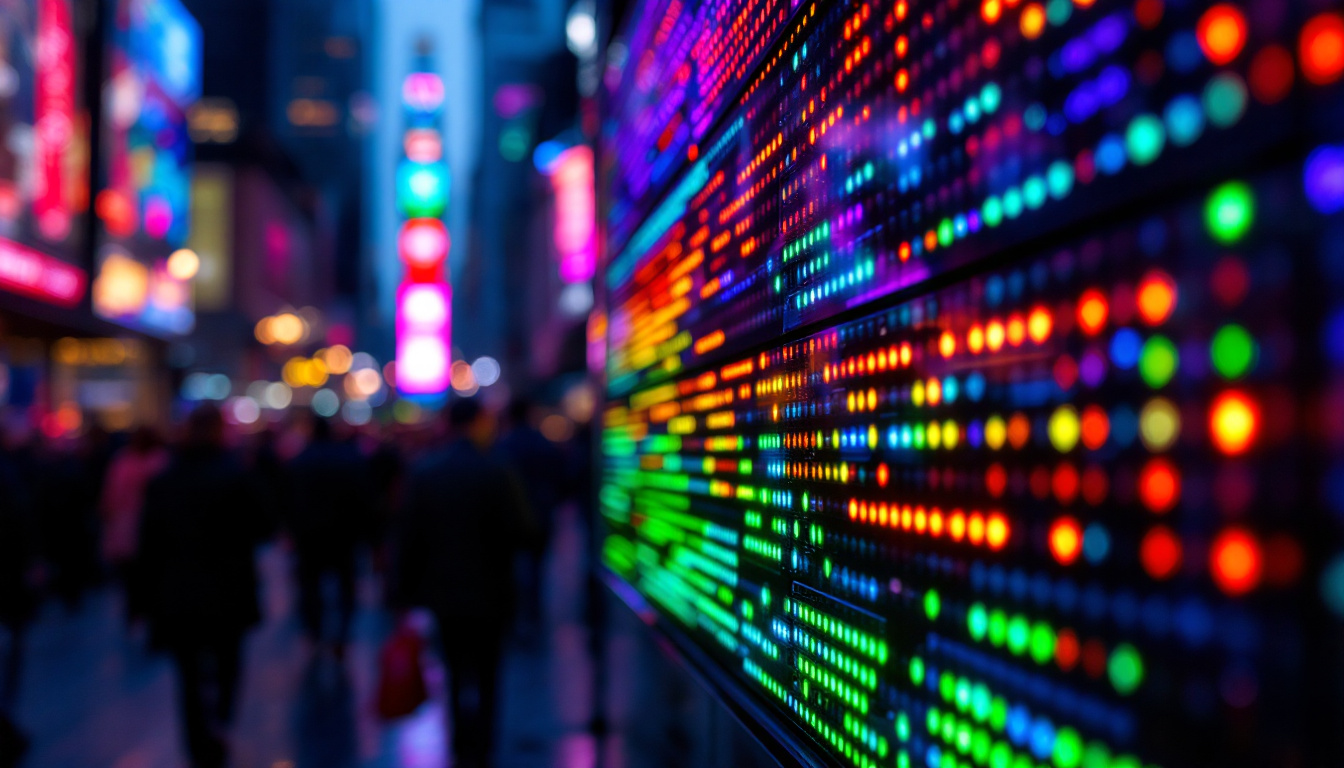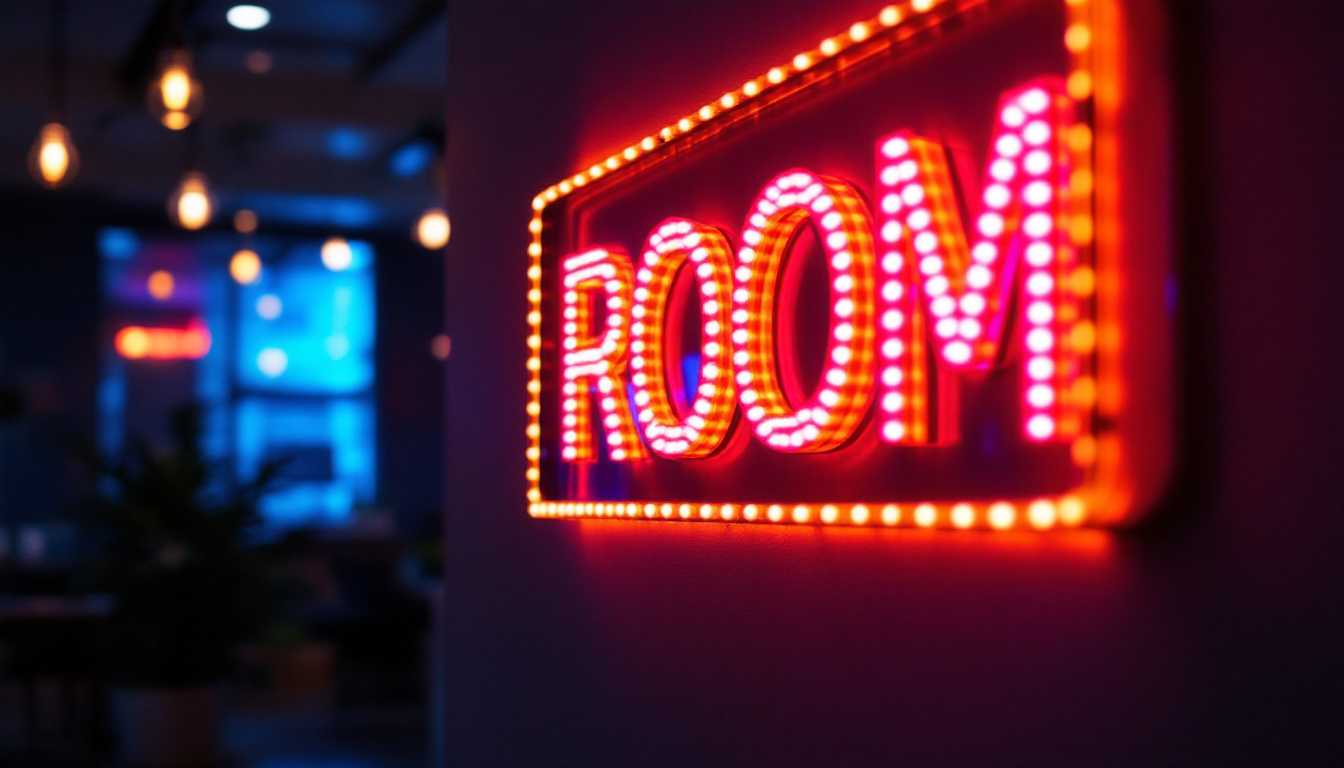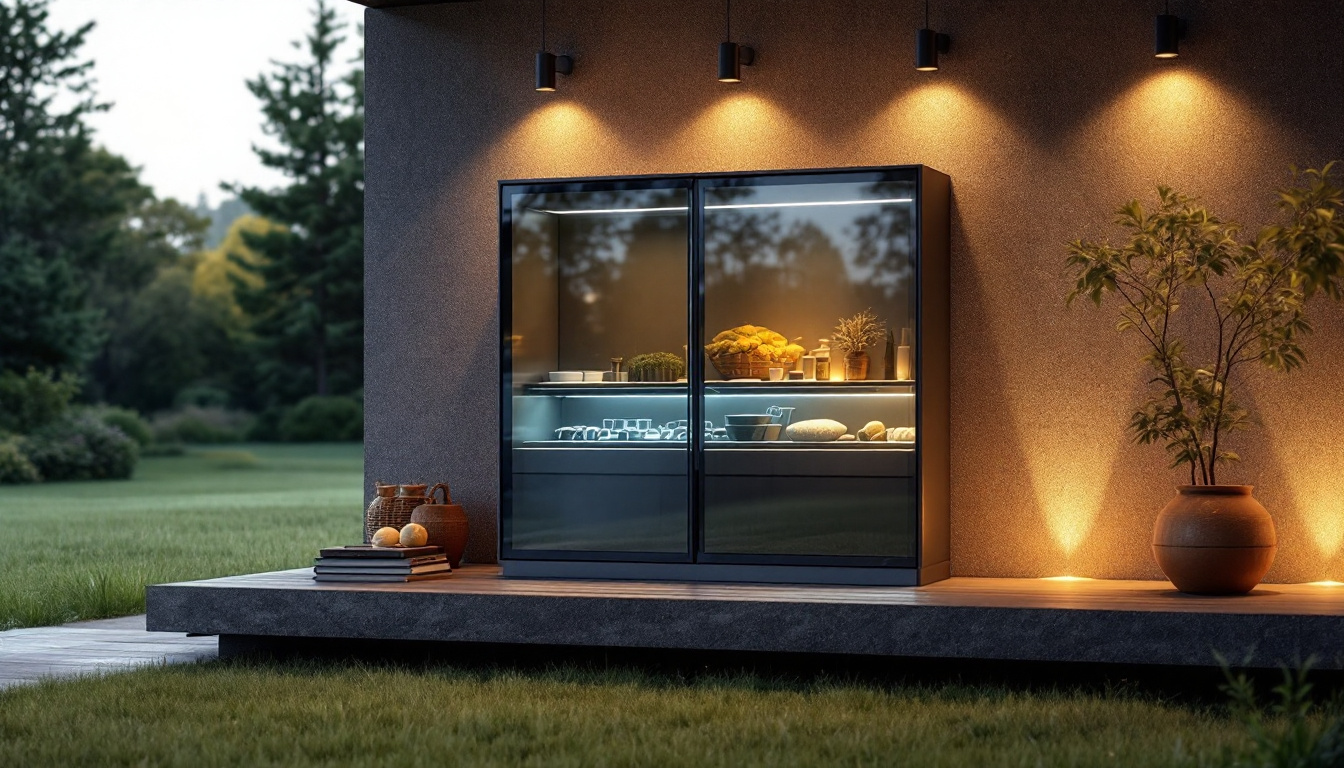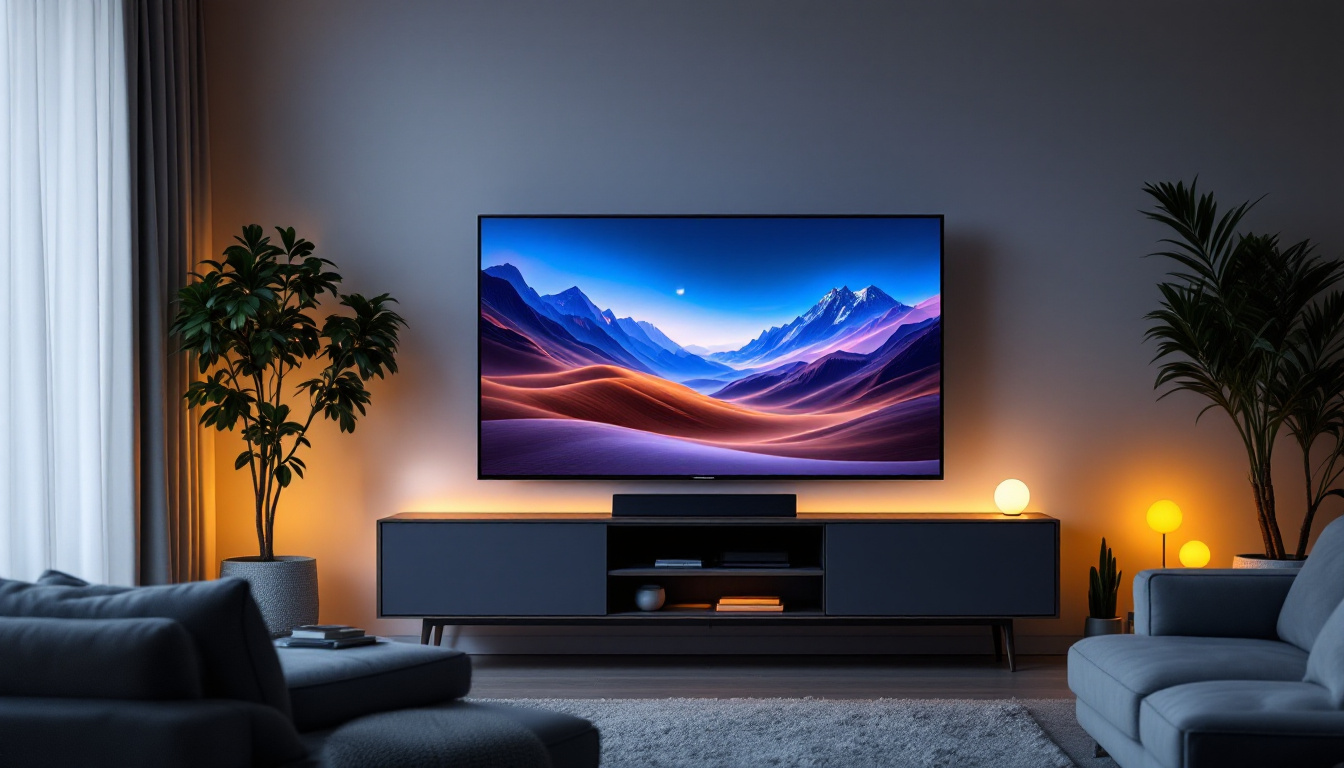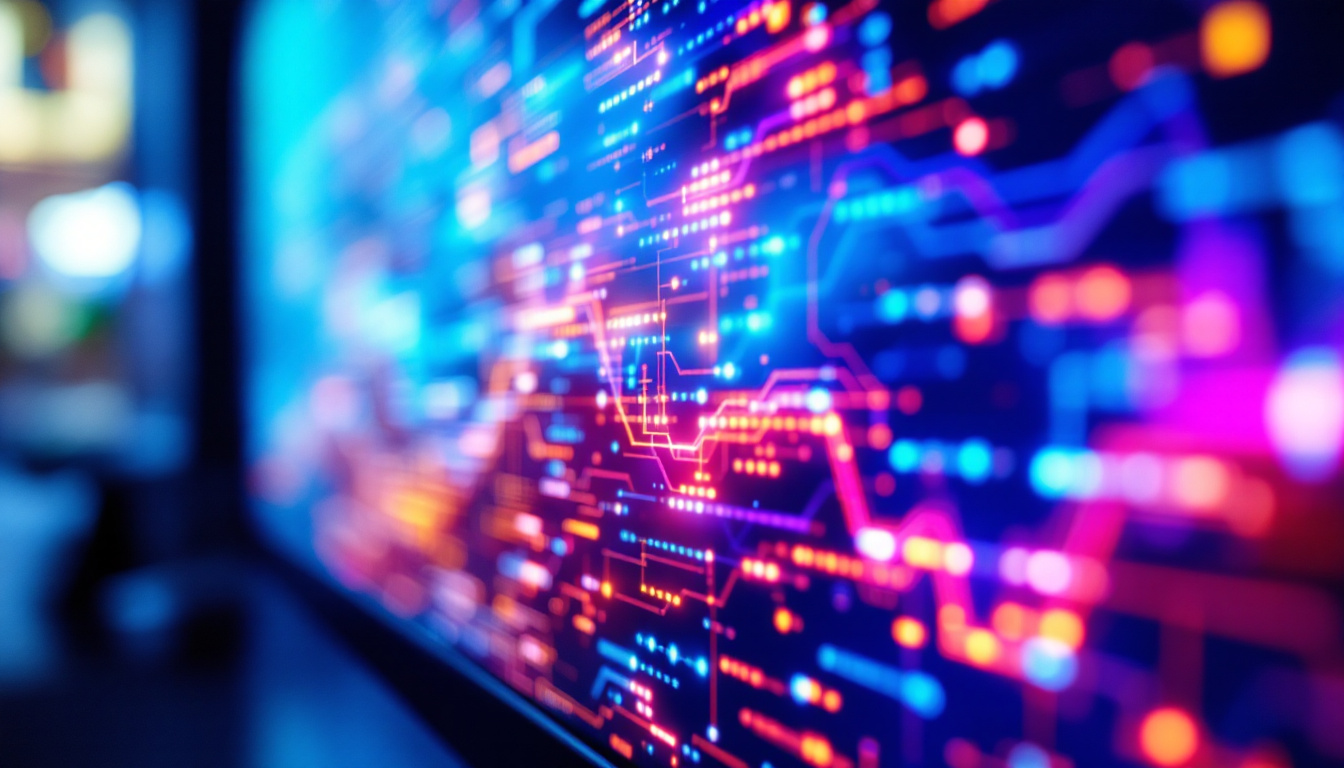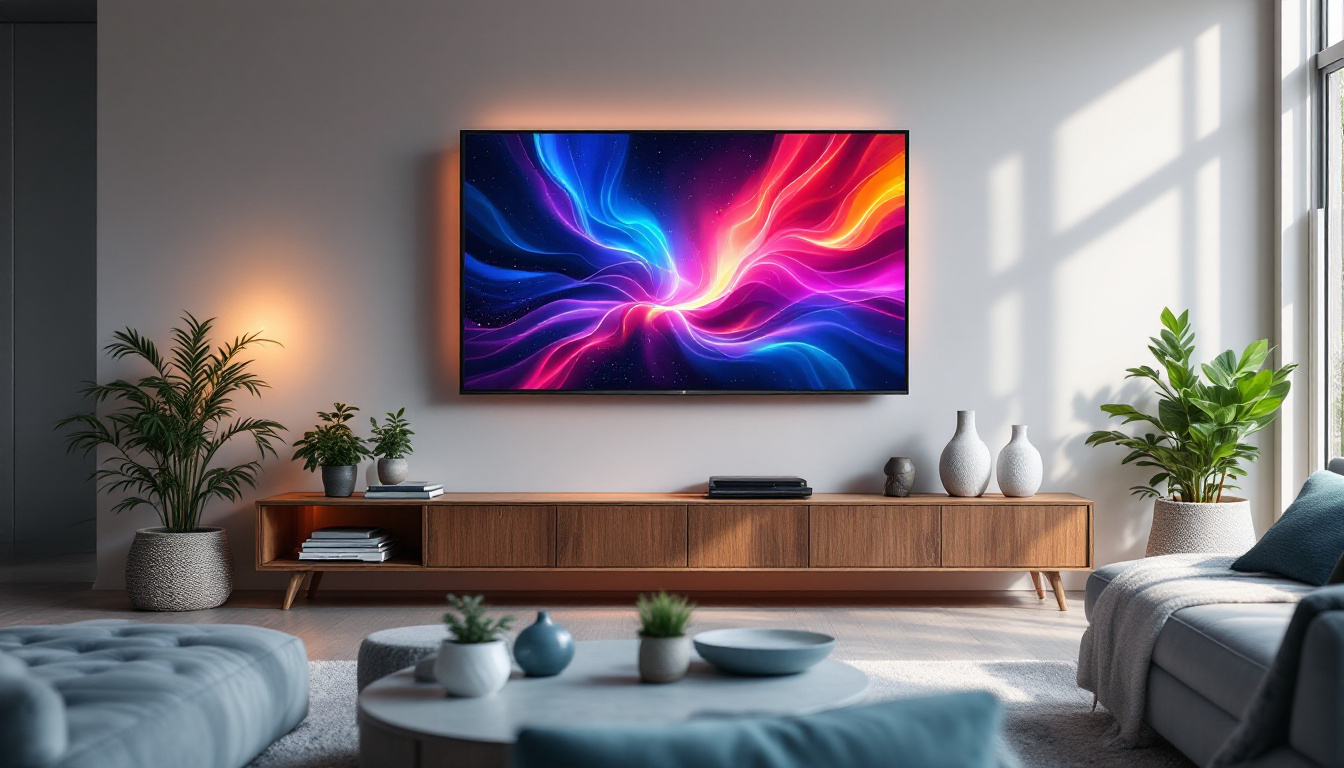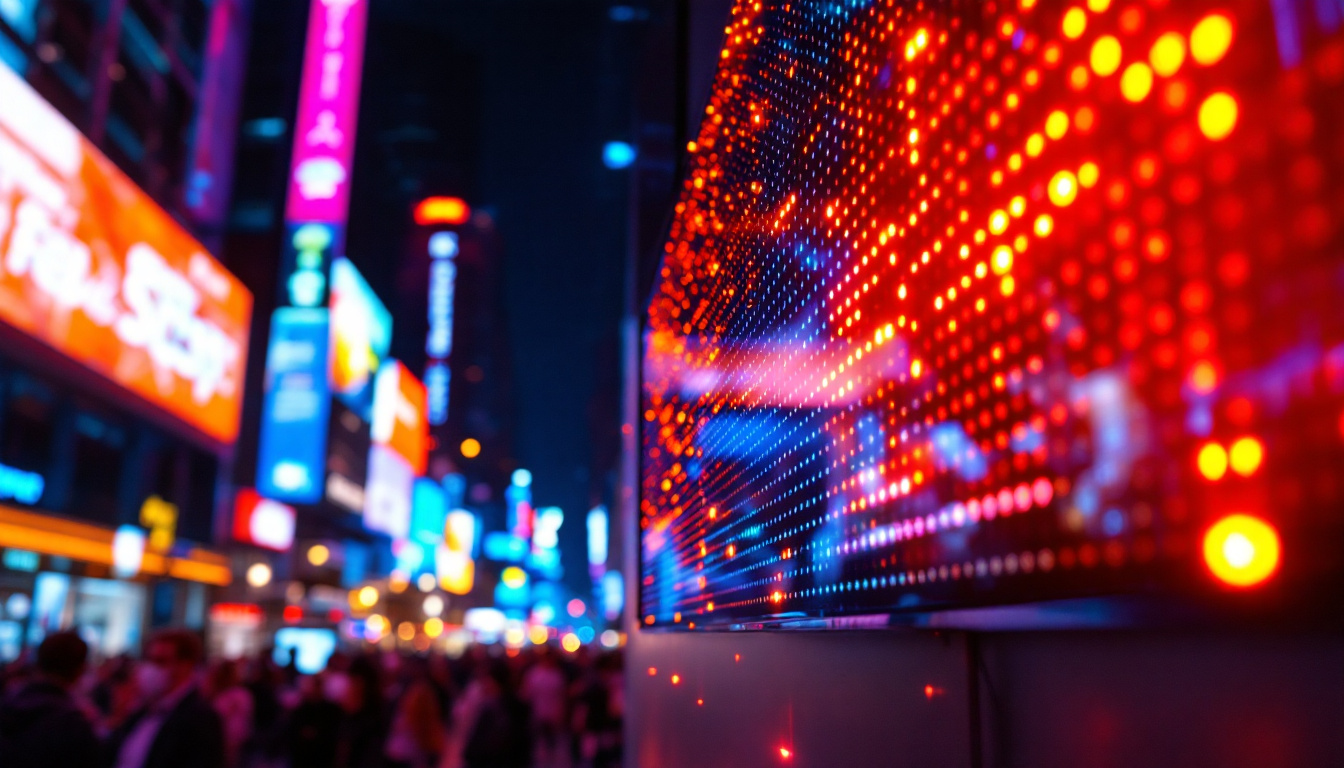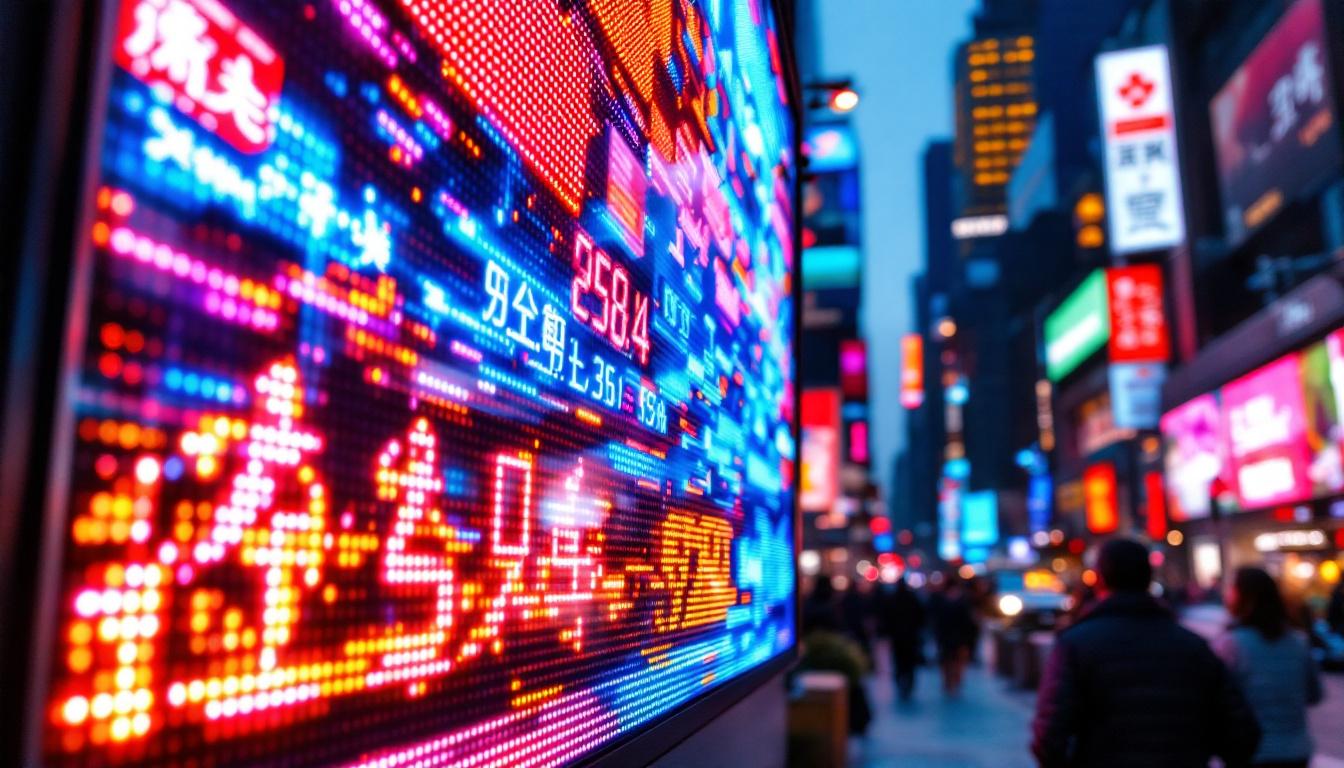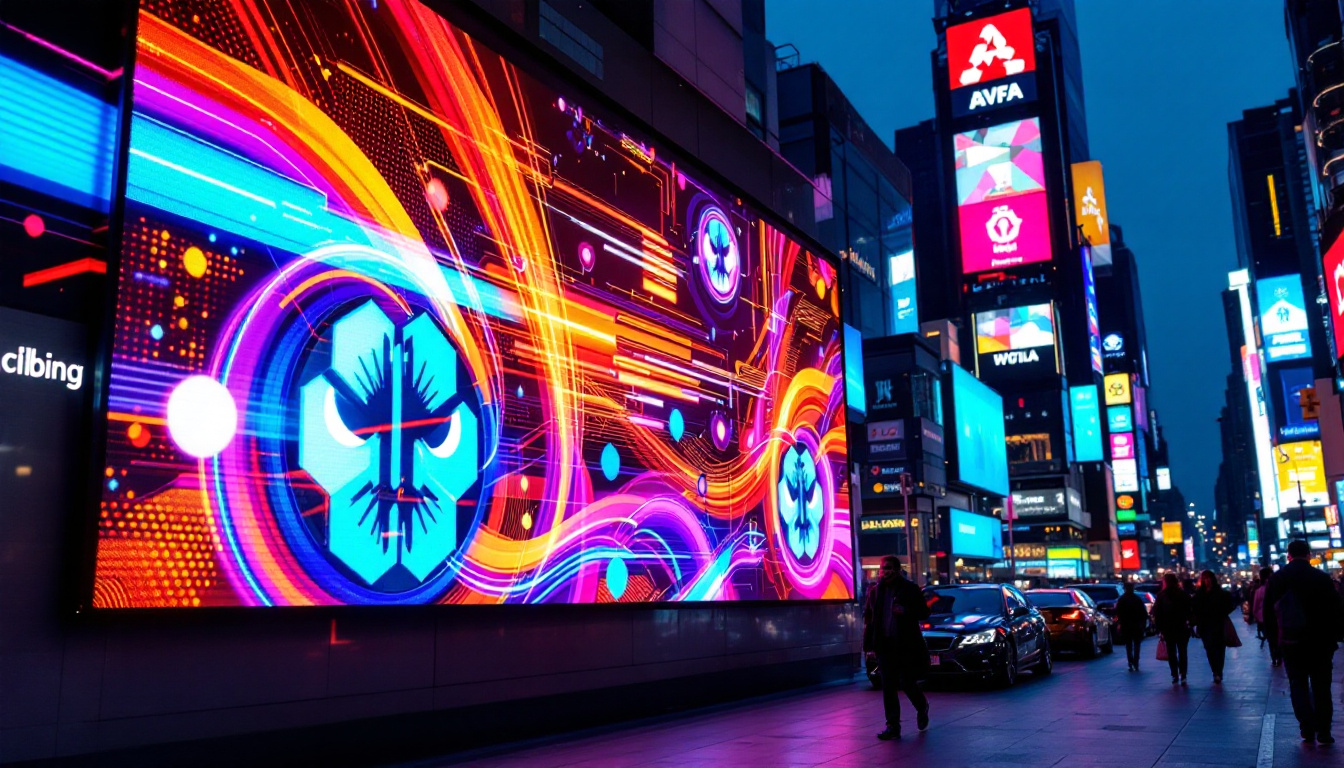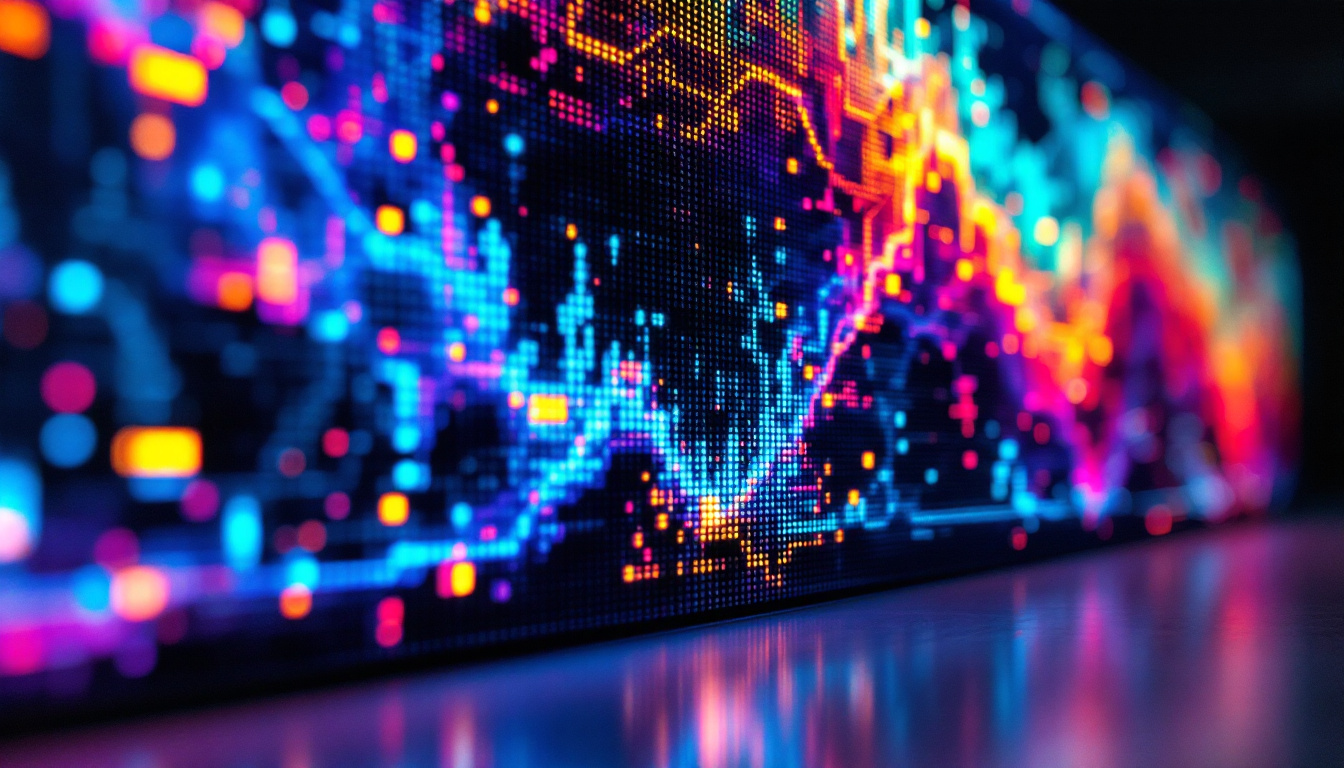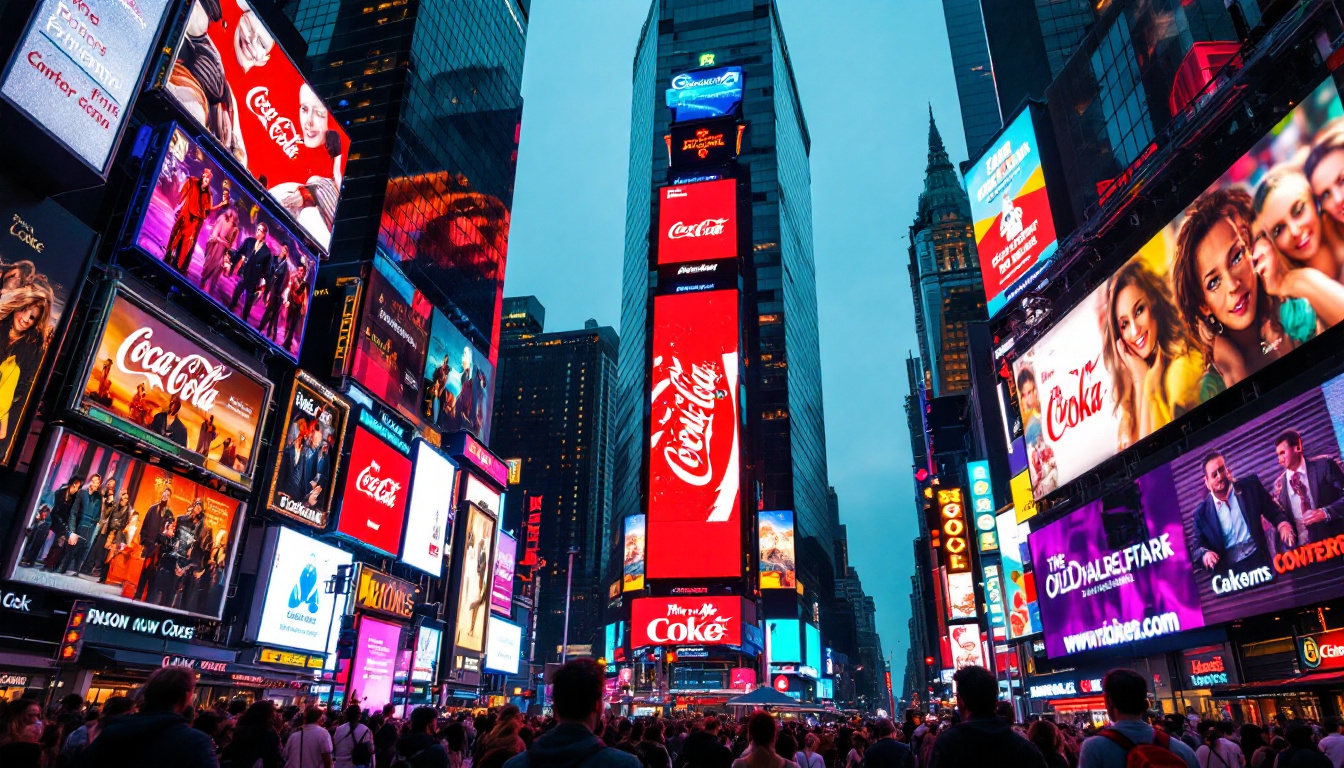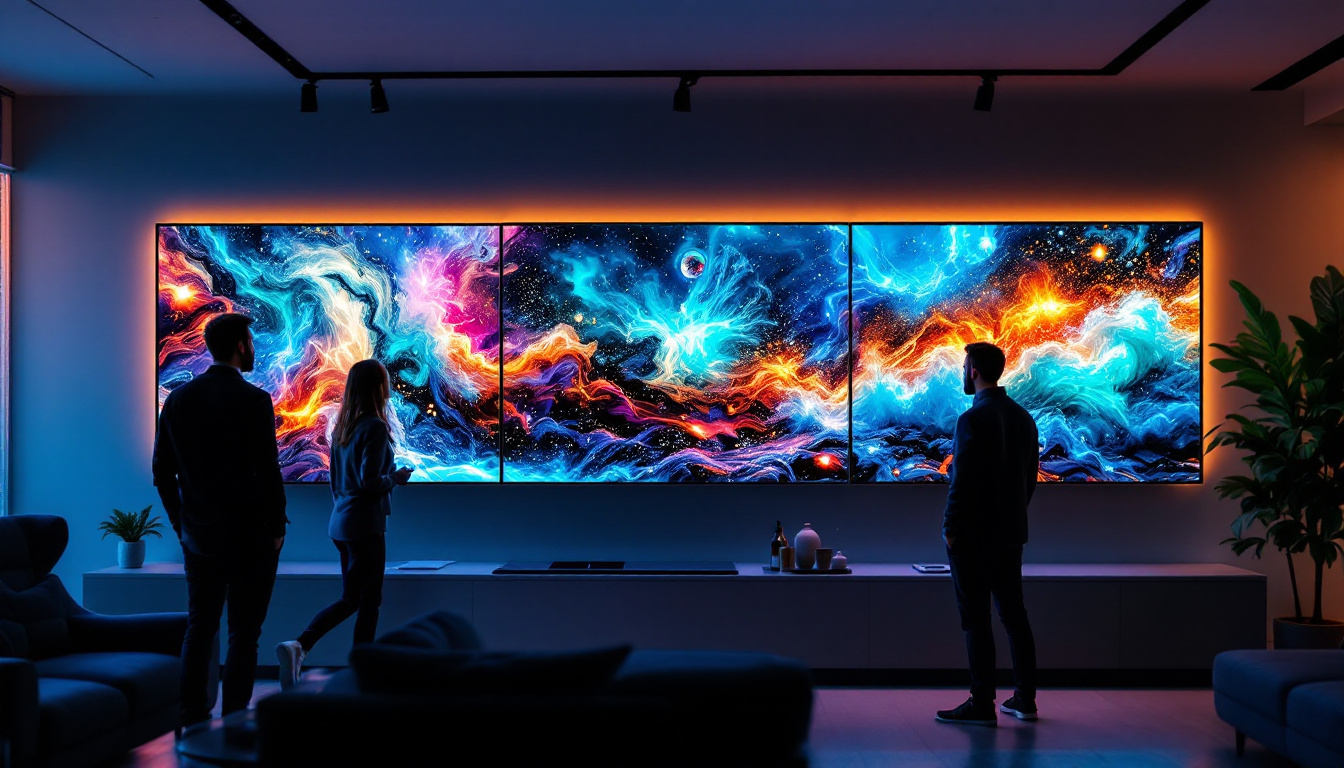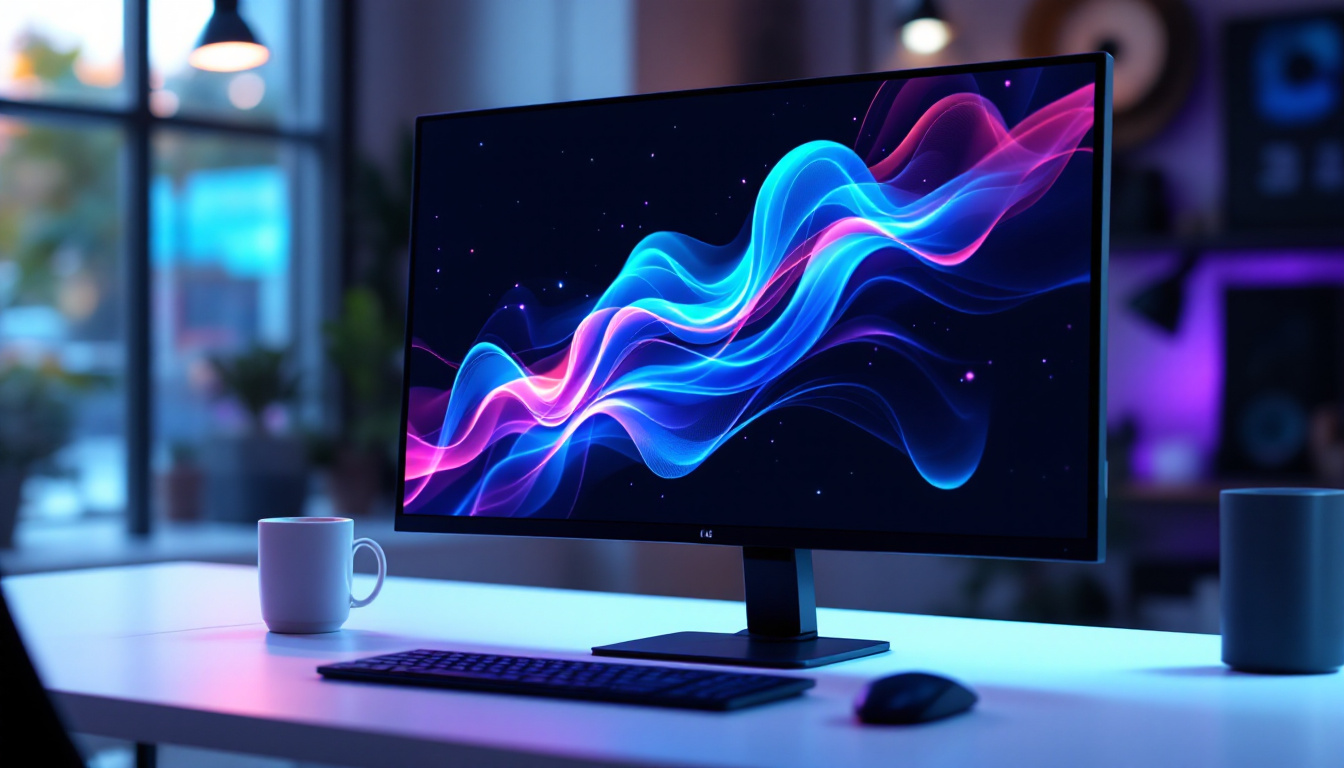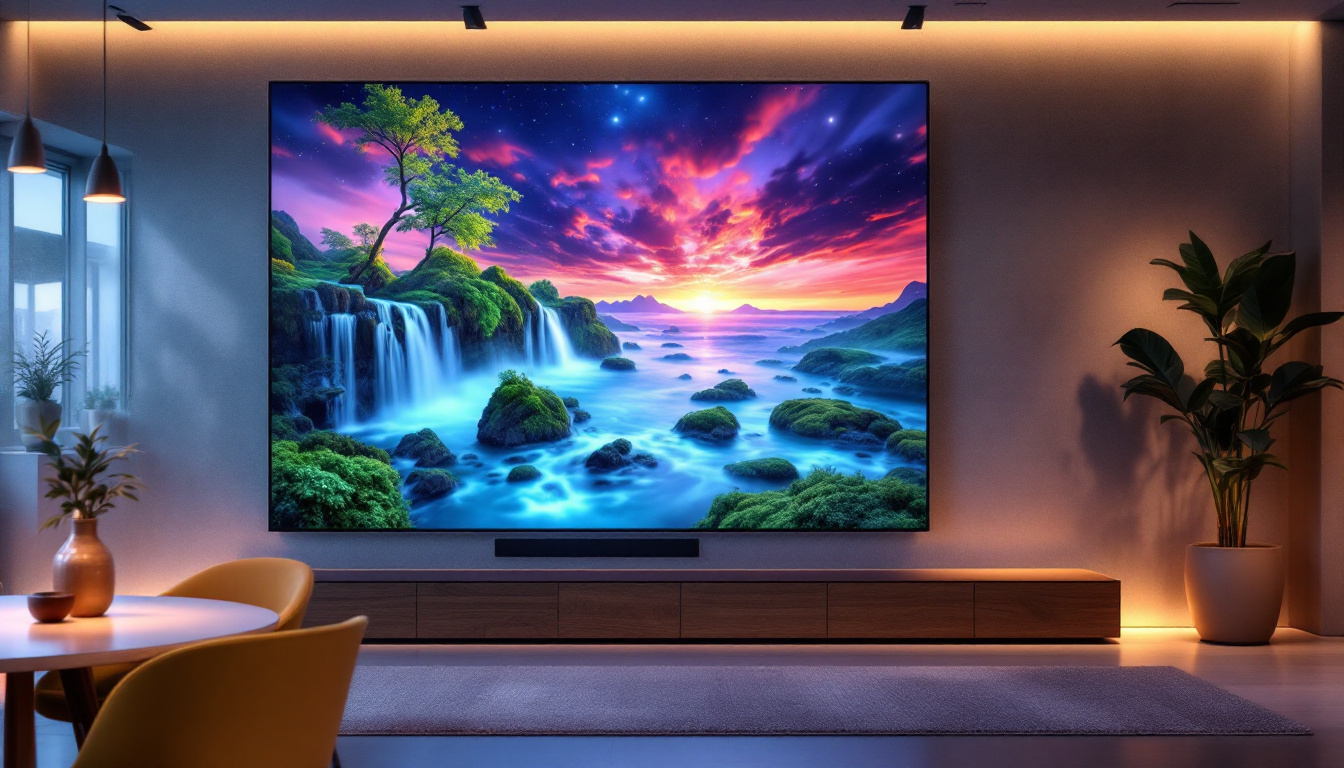In recent years, LED displays have become a prominent feature in various settings, from commercial spaces to residential homes. The integration of LED technology into walls has opened up a new realm of possibilities for visual communication and artistic expression. This article delves into the intricacies of LED displays embedded in walls, exploring their technology, applications, and benefits.
Understanding LED Technology
Light Emitting Diodes (LEDs) are semiconductor devices that emit light when an electric current passes through them. This technology has revolutionized the way we think about lighting and displays, providing brighter, more energy-efficient options compared to traditional lighting methods. The shift towards LED technology has not only impacted consumer electronics but has also played a significant role in reducing energy consumption globally, contributing to a more sustainable future.
How LEDs Work
At the core of LED technology is the principle of electroluminescence. When electrons recombine with holes in a semiconductor material, energy is released in the form of photons, producing light. The color of the light emitted depends on the materials used in the semiconductor. By combining red, green, and blue LEDs, a full spectrum of colors can be created, enabling vibrant displays. This ability to mix colors has made LEDs a popular choice for applications ranging from decorative lighting to large-scale digital billboards, allowing for dynamic visuals that can easily capture attention.
Types of LED Displays
LED displays come in various forms, including direct view, backlit, and organic LED (OLED) displays. Direct view LED displays are composed of individual pixels made up of LEDs, while backlit displays use LEDs to illuminate an LCD panel. OLED displays, on the other hand, utilize organic compounds that emit light when an electric current is applied, offering superior contrast and color accuracy. The flexibility of OLED technology has led to its adoption in smartphones and high-end televisions, where thinness and image quality are paramount. Furthermore, advancements in microLED technology are paving the way for even smaller, more efficient displays that promise to enhance everything from wearable tech to large-scale installations.
Applications of LED Displays in Walls
LED displays embedded in walls have found applications in numerous fields, enhancing both functionality and aesthetics. From advertising to entertainment, the versatility of these displays is remarkable.
Commercial Use
In commercial settings, LED wall displays serve as powerful marketing tools. Retailers utilize large LED screens to showcase promotions, product launches, and brand messages. The dynamic nature of LED displays allows for real-time updates, ensuring that the content remains fresh and engaging for consumers.
Moreover, LED walls are increasingly used in corporate environments for presentations and meetings. Their ability to present high-resolution visuals makes them ideal for displaying data, videos, and interactive content, enhancing the overall communication experience. This technology not only streamlines the flow of information but also captivates the audience, making presentations more memorable and impactful. Companies can leverage this technology to create immersive training sessions, where employees can interact with the content in real-time, fostering a more engaging learning environment.
Entertainment and Events
The entertainment industry has embraced LED wall technology for concerts, festivals, and live events. Large-scale LED displays can create immersive experiences, captivating audiences with stunning visuals that complement performances. The flexibility of LED walls allows for creative designs, transforming stages into dynamic canvases. These displays can synchronize with music and lighting, enhancing the overall atmosphere and providing a multisensory experience that resonates with attendees.
In addition to live events, LED walls are also used in theaters and cinemas, providing enhanced visual effects and engaging storytelling. The ability to control brightness and color saturation ensures that audiences experience films as intended by the creators. Furthermore, this technology is paving the way for innovative storytelling techniques, such as augmented reality experiences that blend live action with digital elements, thereby creating a new dimension of entertainment that captivates viewers and keeps them coming back for more.
Artistic Expression
Artists and designers are increasingly exploring the potential of LED displays as a medium for artistic expression. LED wall installations can transform spaces into interactive art pieces, inviting viewers to engage with the work in novel ways. This fusion of technology and art challenges traditional boundaries and encourages innovative thinking. Artists can manipulate light and color in ways that were previously unimaginable, creating works that change and evolve over time, reflecting the dynamism of contemporary life.
Moreover, the accessibility of LED technology has democratized art creation, allowing emerging artists to experiment with large-scale installations without the prohibitive costs associated with traditional mediums. community art projects utilizing LED displays can foster collaboration and dialogue, as they often invite local participation and reflect the cultural identity of the area. This not only enriches the local art scene but also engages the public in a meaningful way, transforming everyday spaces into vibrant showcases of creativity and imagination.
Benefits of LED Displays in Walls
The integration of LED displays into walls offers numerous advantages, making them a preferred choice for many applications. These benefits extend beyond aesthetics and functionality, impacting energy efficiency and maintenance.
Energy Efficiency
One of the most significant advantages of LED technology is its energy efficiency. LED displays consume considerably less power than traditional display technologies, such as LCD and plasma screens. This not only reduces operational costs but also contributes to a smaller carbon footprint, making LED displays an environmentally friendly option. Additionally, many LED displays are designed with smart technology that allows for dynamic brightness adjustment based on ambient light conditions, further optimizing energy consumption and ensuring that they operate at peak efficiency.
Longevity and Durability
LED displays are known for their longevity, often lasting up to 100,000 hours or more, depending on usage and environmental conditions. This durability translates to lower maintenance costs and less frequent replacements, making them a cost-effective investment for businesses and homeowners alike. Moreover, LED technology is inherently more resilient to shock and vibration compared to traditional displays, making them ideal for high-traffic areas or environments where durability is paramount, such as outdoor venues or industrial settings.
High-Quality Visuals
LED displays provide exceptional image quality, with high brightness levels, contrast ratios, and color accuracy. This ensures that content is displayed vividly, even in well-lit environments. The ability to achieve high resolutions further enhances the viewing experience, making LED walls suitable for a wide range of applications. Furthermore, advancements in LED technology have introduced features such as HDR (High Dynamic Range) capabilities, which allow for a broader range of colors and more detailed images, creating an immersive experience that captivates audiences in settings like concerts, exhibitions, and corporate presentations. The flexibility of LED displays also allows for creative configurations, enabling designers to craft unique visual experiences tailored to specific themes or messages.
Installation Considerations
While the benefits of LED walls are numerous, proper installation is crucial to ensure optimal performance and longevity. Several factors must be considered during the installation process.
Site Assessment
A thorough site assessment is essential before installation. Factors such as ambient light levels, wall structure, and viewing distance must be evaluated to determine the appropriate type and size of the LED display. This assessment helps in selecting the right technology and configuration to meet specific needs.
Mounting Options
LED displays can be mounted in various ways, including wall-mounted, free-standing, or integrated into existing structures. Each mounting option has its advantages and considerations, such as space constraints and aesthetic preferences. It’s important to choose a mounting solution that aligns with the intended use and environment.
Calibration and Maintenance
Once installed, LED displays require calibration to ensure optimal performance. This includes adjusting brightness, color settings, and resolution to achieve the best visual output. Regular maintenance is also essential to keep the displays functioning correctly, which may involve cleaning, software updates, and hardware checks.
Future Trends in LED Wall Technology
The future of LED wall technology looks promising, with ongoing advancements driving innovation and expanding possibilities. Several trends are emerging that are likely to shape the industry in the coming years.
Flexible and Curved Displays
As technology evolves, flexible and curved LED displays are becoming increasingly popular. These displays can be shaped to fit unconventional spaces, allowing for creative installations that were previously unimaginable. This flexibility opens up new avenues for artistic expression and architectural design.
Integration with Smart Technology
With the rise of smart technology, LED displays are being integrated into smart home and building systems. This integration allows for enhanced control and automation, enabling users to customize content and settings based on their preferences. The ability to connect LED displays with other smart devices creates a seamless user experience.
Improved Resolution and Color Accuracy
Advancements in LED technology continue to improve resolution and color accuracy. As manufacturers develop higher pixel densities and better materials, the visual quality of LED displays will reach new heights. This will enhance their appeal for applications requiring precise color representation, such as medical imaging and graphic design.
Conclusion
LED displays embedded in walls represent a significant advancement in visual technology, offering a wide range of applications across various industries. Their energy efficiency, durability, and high-quality visuals make them an attractive choice for both commercial and artistic uses. As technology continues to evolve, the potential for LED wall displays will only expand, paving the way for innovative solutions that enhance communication and creativity.
In a world where visual impact is paramount, LED displays in walls are not just a trend; they are a transformative element that can redefine spaces and experiences. Whether for advertising, entertainment, or artistic expression, the future of LED technology promises exciting developments that will continue to captivate audiences and inspire creators.
Explore the Future of Visual Technology with LumenMatrix
Ready to elevate your space with cutting-edge LED display technology? LumenMatrix is at the forefront of innovation, offering a diverse range of LED display solutions that cater to your unique needs. From captivating Indoor LED Wall Displays to dynamic Outdoor LED Wall Displays, and from versatile Vehicle LED Displays to engaging LED Sports Displays, our mission is to transform your visual communication. Discover how our LED Poster Displays, Floor LED Displays, Custom LED Displays, All-in-One LED Displays, and LED Transparent Displays can create unforgettable visual experiences and enhance audience engagement. Don’t miss the opportunity to make a lasting impression. Check out LumenMatrix LED Display Solutions today and join the revolution in visual storytelling.

